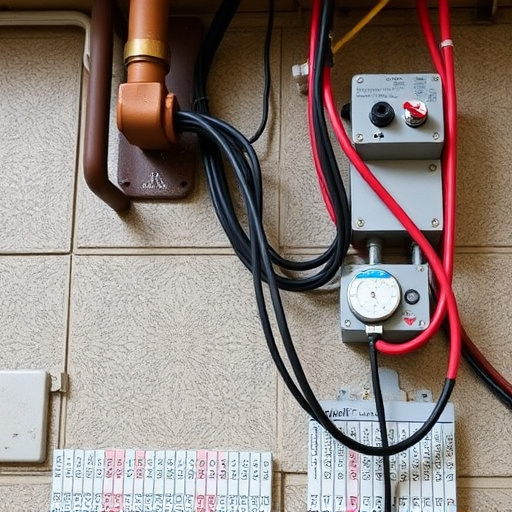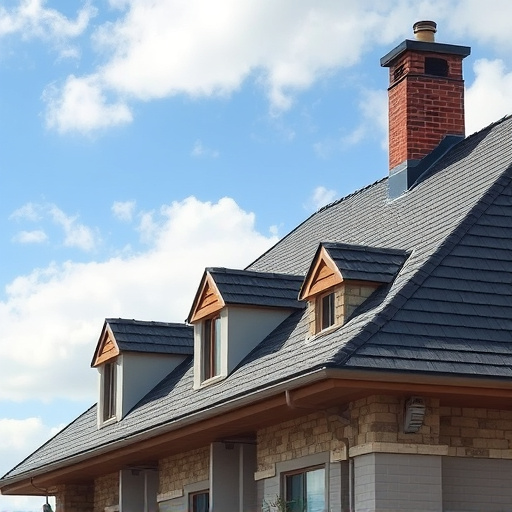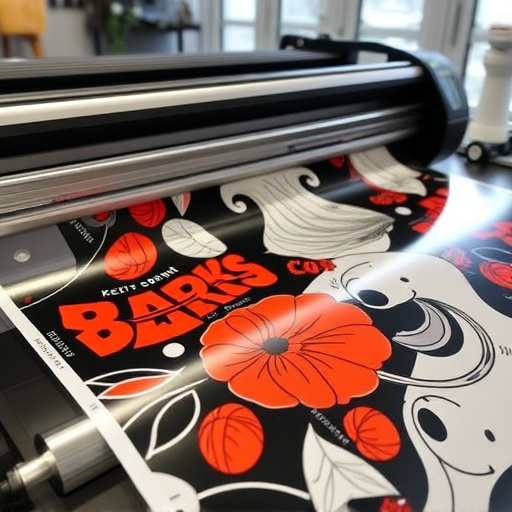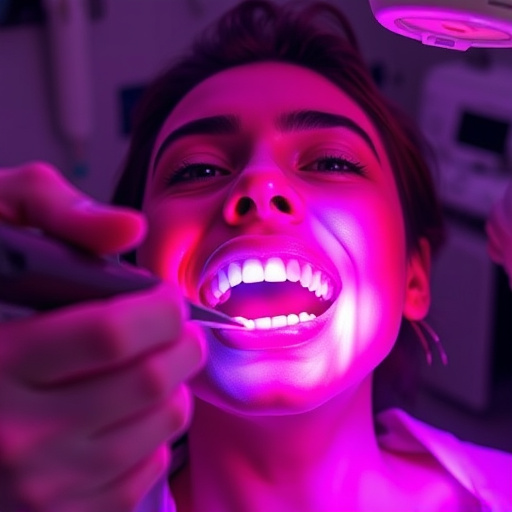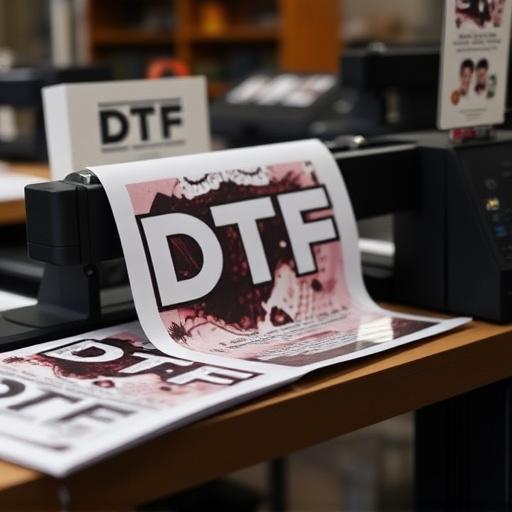DTF curing ovens are designed for efficient material processing in advanced printing and manufacturing industries, utilizing specialized heating elements for uniform temperature distribution. Heat transfer occurs through convection, radiation, and conduction, curing materials evenly. Optimal performance requires adhering to manufacturer guidelines, monitoring heat consistency, and maintaining systems. Regular sensor calibration and strategic placement of heating elements enhance heat uniformity, preventing scorching or patches of uncured ink, optimizing print quality in bulk production runs.
In the realm of industrial curing processes, understanding heat uniformity within DTF (Direct Thermal Forming) curing ovens is paramount. This article delves into the intricate details of these advanced ovens, exploring the fundamentals of heat transfer and distribution. We uncover how heat uniformity significantly impacts oven performance, highlighting critical parameters to monitor. Additionally, practical strategies are presented to ensure optimal heat distribution, ultimately enhancing the efficiency and quality of DTF curing oven operations.
- Understanding DTF Curing Ovens: The Basics of Heat Transfer and Distribution
- Impact of Heat Uniformity on Oven Performance: Key Parameters to Monitor
- Strategies for Ensuring Optimal Heat Uniformity in DTF Curing Ovens
Understanding DTF Curing Ovens: The Basics of Heat Transfer and Distribution

DTF curing ovens are designed for efficient material processing, particularly in industries that rely on advanced printing and manufacturing techniques. Understanding how these ovens work involves grasping the fundamentals of heat transfer and distribution. These ovens utilize specialized heating elements to create a uniform temperature across the entire workspace, ensuring consistent and precise results. Heat is transferred from the elements through convection currents, radiation, and conduction, working in harmony to cure materials like adhesives, coatings, and inks.
The key to a DTF curing oven’s effectiveness lies in its ability to maintain heat uniformity. This is especially crucial for complex or bulky items that require uniform heating during the curing process. Whether it’s for small orders requiring meticulous detail or bulk orders demanding high-volume throughput, proper heat distribution ensures materials cure evenly, minimizing waste and maximizing productivity. Following the manufacturer’s application instructions regarding temperature settings, exposure times, and preheating protocols is essential to achieve optimal results in any DTF curing oven, whether for individual components or large-scale production runs.
Impact of Heat Uniformity on Oven Performance: Key Parameters to Monitor
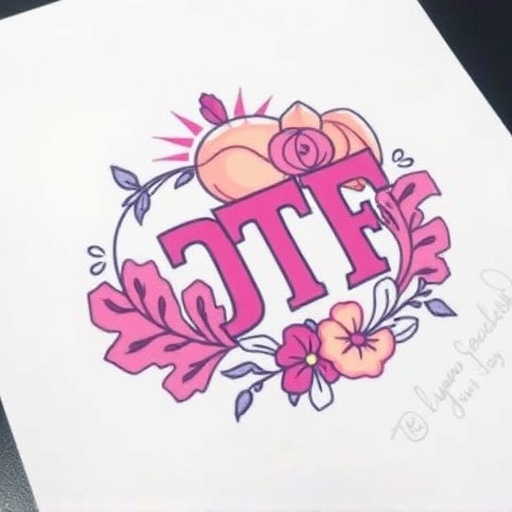
The uniformity of heat distribution is a critical factor in determining the performance and efficiency of a DTF (Direct to Fabric) curing oven. When heat is evenly dispersed across the oven’s chamber, it ensures consistent processing of materials, leading to improved DTF print quality. This is especially crucial for businesses dealing with DTF bulk orders, where maintaining high-quality standards throughout the production run is essential.
Key parameters to monitor include temperature consistency, heating element placement, and air circulation patterns. Optimizing these elements allows for precise control over the curing process, ensuring that no part of the fabric or material experiences excessive or insufficient heat. Proper calibration and regular maintenance of sensors and heating systems are vital to achieving and maintaining optimal DTF heat press settings, ultimately enhancing overall oven performance.
Strategies for Ensuring Optimal Heat Uniformity in DTF Curing Ovens
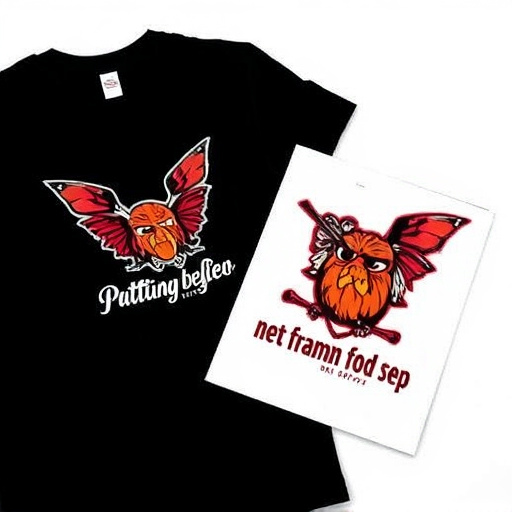
Ensuring optimal heat uniformity is paramount for achieving consistent results in DTF (Direct-to-Fabric) curing ovens. Strategies to achieve this include strategic placement of heating elements and fans, which helps distribute heat evenly across the entire print bed. Regular calibration of the oven’s temperature sensors is crucial to maintain accurate temperature readings. Additionally, using specialized software that monitors and controls heating zones can significantly enhance heat uniformity by allowing precise adjustments in real-time.
The DTF curing process requires a controlled environment where every part of the fabric receives the same level of heat exposure. Custom DTF transfers demand consistent heat to ensure the inks set correctly without scorching or leaving patches uncured. By implementing these strategies, printing facilities can optimize their DTF garment printing processes, resulting in high-quality, durable custom DTF transfers.
In conclusion, heat uniformity is a critical factor for optimizing the performance of DTF curing ovens. By understanding the fundamentals of heat transfer and distribution, monitoring key parameters, and implementing strategies to enhance heat uniformity, manufacturers can ensure consistent and efficient curing processes. These efforts ultimately lead to improved product quality, reduced waste, and increased productivity in industrial applications relying on DTF curing technology.

